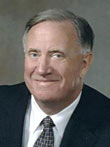Your Career Path to Success Leaders as Teachers: Practicing to Be Perfect

If you look throughout history at famous leaders, many of them were teachers. In fact, true leaders are almost always in teaching mode. That's how they get people to follow -- by inspiring, informing, and helping people to be more than they thought they could be.
As managers, our job is the same: to support the growth of others.
One of the problems with many of us is that when we reach a certain age, learning is no longer a priority. People learn from experience, which is sometimes a very costly, painful teacher, but they don't necessarily seek out formal learning opportunities.
Our job as a leader is to create an environment whereby people see learning as a critical factor for success. Our challenge is to get people excited and to commit to their own growth and development to the point where they are constantly on the lookout for new learning opportunities. We need to facilitate their learning, not to spoon-feed them every step of the way. Perhaps the goal should be to resurrect in the person the curiosity of a 3-year-old.
In a dynamic environment, people review their development plans almost daily. They should look at the priorities outlined in the plan and then look at their daily calendars to determine what opportunities for learning might present themselves. Opportunities for learning could include any of the following:
- A meeting or situation where individuals can practice the application of skills they want to improve (e.g., conflict resolution, listening, sales, etc.).
- Observing someone who is an expert in a particular field or who regularly exhibits a strong skill in a particular area.
- Seeking out people, internally and externally, who are subject or skill experts and asking questions.
- Classes, books, tapes and online resources that specifically address developmental opportunities.
In each learning situation, you can suggest that your team do the following:
- Listen, observe and/or practice, depending on the situation.
- Extract the key learning from the experience..."What did we learn here today?"
- Practice the learning..."What will we do differently?"
- Reflect on what the people did well and how they can improve..."What skills do I need?"
- Apply and practice the new learning and repeat these steps...Recognize the efforts of others.
Learning that results in significant behavior change is rarely a one-time experience. Learn, practice, reflect. Learn, practice, reflect. A great formula for growth.
Practice is essential. Consistently recognizing new behavior is what breaks old patterns and builds new skills and attitudes. Without recognition and your validation of new behavior people will stop learning because they are not rewarded when they try new ways of doing things.
As someone once said, practice doesn't make perfect -- perfect practice makes perfect.
Join our newsletter
Stay up to date on all things happening at WJM Associates



